-
Announcements
-

26 September - Maintenance Notification 09/21/2024
CombatACE.com will be offline this upcoming Thursday morning, September 26, 2024. The duration of this event will be 4-5 hours. Our website will be unavailable and return an error during that time. Maintenance of our equipment is unavoidable, and this downtime will allow the opportunity to replace worn and damaged fans, power supply units, and thermal paste throughout all our equipment. Thank you for reading our maintenance advisory.
-
-
Content count
375 -
Joined
-
Last visited
File Comments posted by wazalo68
-
-
ravenclaw_007! What's up! F4E kURNASS PACK!, F-4E iRANIAN PACK & F-4F Luftwaffe PACK!
-
-
-
ravenclaw_007! What's up! F4E kURNASS PACK!, F-4E iRANIAN PACK & F-4F Luftwaffe PACK!
-
ravenclaw_007! What's up! F4E kURNASS PACK!, F-4E iRANIAN PACK & F-4F Luftwaffe PACK!
-
good work............
Hawker Hunter variants
PrototypesHawker P.1067
Prototype, first flight 20 July 1951, three built with the first later modified as a Hunter Mk 3 for the successful World Speed Record attempts.
WB188 was the prototype that first flew on 20 July 1951 piloted by Neville Duke at Boscombe Down. After being used for performance and handling trials it was modified in 1953 and fitted with an Avon RA7R engine for what was a successful world air speed record attempt in September 1953.
WB195 was the second prototype and first flown on 5 May 1952, it was the first with Aden-gun armament and other military equipment.
WB202 was the third prototype and first flew on the 30 November 1952 powered by an Armstrong-Whitworth Sapphire engine.Hawker P.1083
Supersonic design based on the P.1067 with 50 degree wing sweep and afterburning Avon engine. Construction abandoned and the fuselage and tail were used as basis for the P.1099.Hawker P.1101
Two-seat trainer prototype, first flight 8 July 1955, two built.Production versions
Hunter F.1
First production version, Avon 113 engine, first flight 16 May 1953, 139 built, 113 built by Hawker Aircraft at Kingston-upon-Thames and a further 26 at lackpool.Hunter F.2
Sapphire 101 engine, first flight 14 October 1953, 45 built by Armstrong Whitworth at Coventry. Sole survivor WN904 on static display at Sywell Aerodrome, Northampton.Hunter Mk 3
Sometimes mistakenly called F.3, but it carried no weapons. The first prototype fitted with afterburning Avon RA.7R with 9,600 lbf (42.70 kN) engine, pointed nose, airbrakes on the sides of the fuselage, and a revised windscreen. Used to set raise the world's absolute air speed record to 727.6 mph (1,171 km/h) off the English south coast on 7 September 1953, and days later to set a new 62 mi (100 km) circuit record. It was sold in 1955 and retired as an RAF ground instructional airframe. Now in the Museum at Tangmere, Sussex.Hunter F.4
Additional bag-type fuel tanks in the wings, provision for underwing fuel tanks, Avon 115 (later Avon 121) engine, blisters under the nose for ammunition links, first flight 20 October 1954, 349 built at Kingston-upon-Thames and Blackpool.Hunter F.5
F.4 with Sapphire 101 engine, 105 built by Armstrong Whitworth at Coventry.Hunter F.6
Single-seat clear-weather interceptor fighter. Powered by one 10,150 lbf (45.17 kN) Rolls-Royce Avon 203 turbojet engine, revised wing with a leading edge "dogtooth" and four hardpoints, and a follow-up tailplane on later aircraft (also rerofitted to the early production examples) to improve pitch response at high Mach number, first flight 22 January 1954, 384 built.Hunter F.6A
Modified F.6 with brake parachute and 230 gallon inboard drop tanks, for use at RAF Brawdy, where diversion airfields were distant.Hunter T.7
Two-seat trainer built for the RAF. A side by side seating nose section replaced the single seat nose. Engine and systems as for the F.4; six were rebuilt F.4s, and 65 were new build. The dog-tooth leading edge and follow-up tailpane mods, as on the F.6, were fitted to the T.7.Hunter T.7A
T.7 modified with the Integrated Flight Instrumentation System (IFIS). Used by the RAF as a Blackburn Buccaneer conversion training aircraft.Hunter T.8
Two-seat trainer for the Royal Navy. Fitted with an arrestor hook for use on RN airfields but otherwise similar to the T.7, ten-built new and 18 conversions from F.4s.Hunter T.8B
T.8 with TACAN radio-navigation system and IFIS fitted, cannon and ranging radar removed. Used by the Royal Navy as a Blackburn Buccaneer conversion training aircraft, four conversions.Hunter T.8C
T.8 with TACAN fitted, 11 conversionsHunter T.8M
T.8 fitted with the Sea Harrier's Blue Fox radar, used by the Royal Navy to train Sea Harrier pilots.Hunter FGA.9
Single-seat ground-attack fighter version for the RAF; all were modified from F.6 airframes. Strengthened wing, 230 gallon inboard drop tanks, tail chute, increased oxygen capacity, and bobweight in pitch control circuit to increase stick force in ground attack manoeuvres, 128 conversions.Hunter FR.10
Single-seat reconnaissance version; all 33 were rebuilt F.6 airframes, with 3 x F95 cameras, revised instrument panel layout, brake parachute and 230 gallon inboard drop tanks. Increased oxygen as for the FGA.9, but no pitch bobweight.Hunter GA.11
Single-seat weapons training version for the Royal Navy. Forty ex-RAF Hunter F.4s were converted into the Hunter GA.11. The GA.11 was fitted with an arrester hook and some later had a Harley light. The guns were removed.Hunter PR.11
Single-seat reconnaissance version for the Royal Navy. The nose was as on the FR.10.Hunter Mk 12
Two-seat test aircraft for the Royal Aircraft Establishment. One built, converted from an F.6 airframe.Export versions
Hunter Mk 50
Export version of the Hunter F.4 fighter for Sweden. Swedish designation J 34, 120 built.Hunter Mk 51
Export version of the Hunter F.4 fighter for Denmark, 30 built.Hunter Mk 52
Export version of the Hunter F.4 fighter for Peru, 16 conversions from F.4sHunter T.53
Export version of the Hunter T.7 trainer for Denmark, two built.Hunter Mk 56
Export version of the Hunter F.6 fighter for India, 160 built. Brake parachute added and the provision to carry 500 lb (227 kg) bombs, minor changes to the avionic systems including the removal of the UHF radio facility.Hunter FGA.56A
Export version of the Hunter FGA.9 ground-attack fighter for India.Hunter FGA.57
Export version of the Hunter FGA.9 ground-attack fighter for Kuwait, four conversions from F.6s.Hunter Mk 58
Export version of the Hunter F.6 fighter for Switzerland, 88 built and 12 conversions from F.6s.Hunter Mk 58A
Export version of the Hunter FGA.9 ground-attack fighter for Switzerland. 52 conversions from other marks.Hunter FGA.59
Export version of the Hunter FGA.9 ground-attack fighter for Iraq, 24 conversions.Hunter FGA.59A
18 aircraft were sold to Iraq as part of a follow-on order, 18 conversions from F.6s.Hunter FGA.59B
Four aircraft were sold to Iraq as part of a follow-on order, 4 conversions from F.6s.Hunter F.60
Export version of the Hunter F.6 fighter for Saudi Arabia, 4 conversions from F.6s.Hunter T.62
Export version of the Hunter T.7 trainer for Peru.Hunter T.66
Two-seat training version for the Indian Air Force, powered by a Rolls-Royce Avon 200-series turbojet engine, 20-built.Hunter T.66A
A composite Hunter, built from a damaged Belgian F.6 bought back by the company, and a 2-seat nose originally built for display at the Paris Salon. Used as a demonstration aircraft, registered G-APUX. Finished in red and white, and used for promotional displays and in evaluations. Later sold to Chile as a T.72.Hunter T.66B
Export version of the Hunter T.66 trainer for Jordan, one-built and two-conversions.Hunter T.66C
Export version of the Hunter T.66 trainer for Lebanon, three conversions from F.6s.Hunter T.66D
12 aircraft sold to India as part of a follow-on order, converted from F.6s.Hunter T.66E
Five aircraft sold to India as part of a follow-on order, converted from F.6s.Hunter T.67
Export version of the Hunter T.66 trainer for Kuwait, four conversions from F.6s.Hunter T.68
Export version of the Hunter T.66 trainer for Switzerland, eight conversions from F.5s and Mk 50s.Hunter T.69
Export version of the Hunter T.66 trainer for Iraq, three conversions from F.6s.Hunter FGA.70
Export version of the Hunter FGA.9 ground-attack fighter for Lebanon, four conversions from F.6s.Hunter FGA.70A
Lebanon.Hunter T.70
This was the unofficial designation given to two ex-RAF Hunter T.7s sold to Saudi Arabia.Hunter FGA.71
export version of the Hunter FGA.9 ground-attack fighter for Chile.Hunter FR.71A
Export version of the Hunter FR.10 reconnaissance aircraft for Chile.Hunter T.72
Export version of the T.66 trainer for Chile.Hunter FGA.73
Export version of the Hunter FGA.9 ground-attack fighter for Jordan.Hunter FGA.73A
Four aircraft sold to Jordan as part of a follow-on order.Hunter FGA.73B
Three aircraft sold to Jordan as part of a follow-on order.Hunter FGA.74
12× Export version of the Hunter FGA.9 ground-attack fighter for Singapore, upgraded in late 1970s and re-designated as Hunter F.74S.[1][2][3]Hunter FR.74A
4× Export version of the Hunter FR.10 reconnaissance aircraft for Singapore, upgraded in late 1970s and re-designated as Hunter FR.74S.[1][2][3]Hunter FR.74B
22× aircraft delivered to Singapore as part of a follow order, upgraded in late 1970s and re-designated as Hunter FR.74S.[1][2][3]Hunter T.75
4× Export version of the Hunter T.66 trainer for Singapore, upgraded in late 1970s and re-designated as Hunter T.75S.[1][2][3]Hunter T.75A
4× aircraft delivered to Singapore as part of a follow-on order (A fifth aircraft was lost in an accident before delivery), upgraded in late 1970s and re-designated as Hunter T.75S.[1][2][3]Hunter FGA.76
Export version of the Hunter FGA.9 ground-attack fighter for Abu Dhabi.Hunter FR.76A
Export version of the Hunter FR.10 reconnaissance aircraft for Abu Dhabi.Hunter T.77
Export version of the Hunter T.7 trainer for Abu Dhabi.Hunter FGA.78
Export version of the Hunter FGA.9 ground-attack fighter for Qatar.Hunter T.79
Export version of the Hunter T.7 trainer for Qatar.Hunter FGA.80
Ex-RAF FGA.9 ground-attack fighter sold to Kenya.Hunter T.81
Export version of the Hunter T.66 trainer for Kenya.References
Notes
1.^ Jump up to: a b c d e "Hawker Hunter Survivor 527". www.thunder-and-lightnings.co.uk.
2.^ Jump up to: a b c d e Greg, Goebel. "Hawker Hunter In British & Foreign Service". www.wingweb.co.uk. Retrieved 15 April 2011.
3.^ Jump up to: a b c d e Peter, Atkins (November 1994). "Singapore or Bust". Air Forces Monthly (Key Publishing Ltd) (67). ISSN 0955-7091.Bibliography
Deacon, Ray. Hawker Hunter - 50 Golden Years. Feltham, UK: Vogelsang Publications, 2001. ISBN 0-9540666-0-X.
Griffin, David. Hawker Hunter 1951 to 2007. Tacoma, WA, USA: Lulu Enterprises. www.Lulu.com, 2007. ISBN 1-4303-0593-2.
Hannah, Donald. Hawker FlyPast Reference Library. Stamford, Lincolnshire, UK: Key Publishing Ltd., 1982. ISBN 0-946219-01-X.
Jackson, Robert. Modern Combat Aircraft 15, Hawker Hunter. Shepperton, Surrey, UK: Cromwell Books, 1982, ISBN 0-7110-1216-4.
James, Derek N. Hawker, an Aircraft Album No. 5. New York: Arco Publishing Company, 1973. ISBN 0-668-02699-5. (First published in the UK by Ian Allan in 1972.)
Mason, Francis K. Hawker Aircraft since 1920. London: Putnam, 1991. ISBN 0-85177-839-9
Winchester, Jim, ed. "Hawker Hunter." Military Aircraft of the Cold War (The Aviation Factfile). London: Grange Books plc, 2006. ISBN 1-84013-929-3. -
good work............
Hawker Hunter variants
PrototypesHawker P.1067
Prototype, first flight 20 July 1951, three built with the first later modified as a Hunter Mk 3 for the successful World Speed Record attempts.
WB188 was the prototype that first flew on 20 July 1951 piloted by Neville Duke at Boscombe Down. After being used for performance and handling trials it was modified in 1953 and fitted with an Avon RA7R engine for what was a successful world air speed record attempt in September 1953.
WB195 was the second prototype and first flown on 5 May 1952, it was the first with Aden-gun armament and other military equipment.
WB202 was the third prototype and first flew on the 30 November 1952 powered by an Armstrong-Whitworth Sapphire engine.Hawker P.1083
Supersonic design based on the P.1067 with 50 degree wing sweep and afterburning Avon engine. Construction abandoned and the fuselage and tail were used as basis for the P.1099.Hawker P.1101
Two-seat trainer prototype, first flight 8 July 1955, two built.Production versions
Hunter F.1
First production version, Avon 113 engine, first flight 16 May 1953, 139 built, 113 built by Hawker Aircraft at Kingston-upon-Thames and a further 26 at lackpool.Hunter F.2
Sapphire 101 engine, first flight 14 October 1953, 45 built by Armstrong Whitworth at Coventry. Sole survivor WN904 on static display at Sywell Aerodrome, Northampton.Hunter Mk 3
Sometimes mistakenly called F.3, but it carried no weapons. The first prototype fitted with afterburning Avon RA.7R with 9,600 lbf (42.70 kN) engine, pointed nose, airbrakes on the sides of the fuselage, and a revised windscreen. Used to set raise the world's absolute air speed record to 727.6 mph (1,171 km/h) off the English south coast on 7 September 1953, and days later to set a new 62 mi (100 km) circuit record. It was sold in 1955 and retired as an RAF ground instructional airframe. Now in the Museum at Tangmere, Sussex.Hunter F.4
Additional bag-type fuel tanks in the wings, provision for underwing fuel tanks, Avon 115 (later Avon 121) engine, blisters under the nose for ammunition links, first flight 20 October 1954, 349 built at Kingston-upon-Thames and Blackpool.Hunter F.5
F.4 with Sapphire 101 engine, 105 built by Armstrong Whitworth at Coventry.Hunter F.6
Single-seat clear-weather interceptor fighter. Powered by one 10,150 lbf (45.17 kN) Rolls-Royce Avon 203 turbojet engine, revised wing with a leading edge "dogtooth" and four hardpoints, and a follow-up tailplane on later aircraft (also rerofitted to the early production examples) to improve pitch response at high Mach number, first flight 22 January 1954, 384 built.Hunter F.6A
Modified F.6 with brake parachute and 230 gallon inboard drop tanks, for use at RAF Brawdy, where diversion airfields were distant.Hunter T.7
Two-seat trainer built for the RAF. A side by side seating nose section replaced the single seat nose. Engine and systems as for the F.4; six were rebuilt F.4s, and 65 were new build. The dog-tooth leading edge and follow-up tailpane mods, as on the F.6, were fitted to the T.7.Hunter T.7A
T.7 modified with the Integrated Flight Instrumentation System (IFIS). Used by the RAF as a Blackburn Buccaneer conversion training aircraft.Hunter T.8
Two-seat trainer for the Royal Navy. Fitted with an arrestor hook for use on RN airfields but otherwise similar to the T.7, ten-built new and 18 conversions from F.4s.Hunter T.8B
T.8 with TACAN radio-navigation system and IFIS fitted, cannon and ranging radar removed. Used by the Royal Navy as a Blackburn Buccaneer conversion training aircraft, four conversions.Hunter T.8C
T.8 with TACAN fitted, 11 conversionsHunter T.8M
T.8 fitted with the Sea Harrier's Blue Fox radar, used by the Royal Navy to train Sea Harrier pilots.Hunter FGA.9
Single-seat ground-attack fighter version for the RAF; all were modified from F.6 airframes. Strengthened wing, 230 gallon inboard drop tanks, tail chute, increased oxygen capacity, and bobweight in pitch control circuit to increase stick force in ground attack manoeuvres, 128 conversions.Hunter FR.10
Single-seat reconnaissance version; all 33 were rebuilt F.6 airframes, with 3 x F95 cameras, revised instrument panel layout, brake parachute and 230 gallon inboard drop tanks. Increased oxygen as for the FGA.9, but no pitch bobweight.Hunter GA.11
Single-seat weapons training version for the Royal Navy. Forty ex-RAF Hunter F.4s were converted into the Hunter GA.11. The GA.11 was fitted with an arrester hook and some later had a Harley light. The guns were removed.Hunter PR.11
Single-seat reconnaissance version for the Royal Navy. The nose was as on the FR.10.Hunter Mk 12
Two-seat test aircraft for the Royal Aircraft Establishment. One built, converted from an F.6 airframe.Export versions
Hunter Mk 50
Export version of the Hunter F.4 fighter for Sweden. Swedish designation J 34, 120 built.Hunter Mk 51
Export version of the Hunter F.4 fighter for Denmark, 30 built.Hunter Mk 52
Export version of the Hunter F.4 fighter for Peru, 16 conversions from F.4sHunter T.53
Export version of the Hunter T.7 trainer for Denmark, two built.Hunter Mk 56
Export version of the Hunter F.6 fighter for India, 160 built. Brake parachute added and the provision to carry 500 lb (227 kg) bombs, minor changes to the avionic systems including the removal of the UHF radio facility.Hunter FGA.56A
Export version of the Hunter FGA.9 ground-attack fighter for India.Hunter FGA.57
Export version of the Hunter FGA.9 ground-attack fighter for Kuwait, four conversions from F.6s.Hunter Mk 58
Export version of the Hunter F.6 fighter for Switzerland, 88 built and 12 conversions from F.6s.Hunter Mk 58A
Export version of the Hunter FGA.9 ground-attack fighter for Switzerland. 52 conversions from other marks.Hunter FGA.59
Export version of the Hunter FGA.9 ground-attack fighter for Iraq, 24 conversions.Hunter FGA.59A
18 aircraft were sold to Iraq as part of a follow-on order, 18 conversions from F.6s.Hunter FGA.59B
Four aircraft were sold to Iraq as part of a follow-on order, 4 conversions from F.6s.Hunter F.60
Export version of the Hunter F.6 fighter for Saudi Arabia, 4 conversions from F.6s.Hunter T.62
Export version of the Hunter T.7 trainer for Peru.Hunter T.66
Two-seat training version for the Indian Air Force, powered by a Rolls-Royce Avon 200-series turbojet engine, 20-built.Hunter T.66A
A composite Hunter, built from a damaged Belgian F.6 bought back by the company, and a 2-seat nose originally built for display at the Paris Salon. Used as a demonstration aircraft, registered G-APUX. Finished in red and white, and used for promotional displays and in evaluations. Later sold to Chile as a T.72.Hunter T.66B
Export version of the Hunter T.66 trainer for Jordan, one-built and two-conversions.Hunter T.66C
Export version of the Hunter T.66 trainer for Lebanon, three conversions from F.6s.Hunter T.66D
12 aircraft sold to India as part of a follow-on order, converted from F.6s.Hunter T.66E
Five aircraft sold to India as part of a follow-on order, converted from F.6s.Hunter T.67
Export version of the Hunter T.66 trainer for Kuwait, four conversions from F.6s.Hunter T.68
Export version of the Hunter T.66 trainer for Switzerland, eight conversions from F.5s and Mk 50s.Hunter T.69
Export version of the Hunter T.66 trainer for Iraq, three conversions from F.6s.Hunter FGA.70
Export version of the Hunter FGA.9 ground-attack fighter for Lebanon, four conversions from F.6s.Hunter FGA.70A
Lebanon.Hunter T.70
This was the unofficial designation given to two ex-RAF Hunter T.7s sold to Saudi Arabia.Hunter FGA.71
export version of the Hunter FGA.9 ground-attack fighter for Chile.Hunter FR.71A
Export version of the Hunter FR.10 reconnaissance aircraft for Chile.Hunter T.72
Export version of the T.66 trainer for Chile.Hunter FGA.73
Export version of the Hunter FGA.9 ground-attack fighter for Jordan.Hunter FGA.73A
Four aircraft sold to Jordan as part of a follow-on order.Hunter FGA.73B
Three aircraft sold to Jordan as part of a follow-on order.Hunter FGA.74
12× Export version of the Hunter FGA.9 ground-attack fighter for Singapore, upgraded in late 1970s and re-designated as Hunter F.74S.[1][2][3]Hunter FR.74A
4× Export version of the Hunter FR.10 reconnaissance aircraft for Singapore, upgraded in late 1970s and re-designated as Hunter FR.74S.[1][2][3]Hunter FR.74B
22× aircraft delivered to Singapore as part of a follow order, upgraded in late 1970s and re-designated as Hunter FR.74S.[1][2][3]Hunter T.75
4× Export version of the Hunter T.66 trainer for Singapore, upgraded in late 1970s and re-designated as Hunter T.75S.[1][2][3]Hunter T.75A
4× aircraft delivered to Singapore as part of a follow-on order (A fifth aircraft was lost in an accident before delivery), upgraded in late 1970s and re-designated as Hunter T.75S.[1][2][3]Hunter FGA.76
Export version of the Hunter FGA.9 ground-attack fighter for Abu Dhabi.Hunter FR.76A
Export version of the Hunter FR.10 reconnaissance aircraft for Abu Dhabi.Hunter T.77
Export version of the Hunter T.7 trainer for Abu Dhabi.Hunter FGA.78
Export version of the Hunter FGA.9 ground-attack fighter for Qatar.Hunter T.79
Export version of the Hunter T.7 trainer for Qatar.Hunter FGA.80
Ex-RAF FGA.9 ground-attack fighter sold to Kenya.Hunter T.81
Export version of the Hunter T.66 trainer for Kenya.References
Notes
1.^ Jump up to: a b c d e "Hawker Hunter Survivor 527". www.thunder-and-lightnings.co.uk.
2.^ Jump up to: a b c d e Greg, Goebel. "Hawker Hunter In British & Foreign Service". www.wingweb.co.uk. Retrieved 15 April 2011.
3.^ Jump up to: a b c d e Peter, Atkins (November 1994). "Singapore or Bust". Air Forces Monthly (Key Publishing Ltd) (67). ISSN 0955-7091.Bibliography
Deacon, Ray. Hawker Hunter - 50 Golden Years. Feltham, UK: Vogelsang Publications, 2001. ISBN 0-9540666-0-X.
Griffin, David. Hawker Hunter 1951 to 2007. Tacoma, WA, USA: Lulu Enterprises. www.Lulu.com, 2007. ISBN 1-4303-0593-2.
Hannah, Donald. Hawker FlyPast Reference Library. Stamford, Lincolnshire, UK: Key Publishing Ltd., 1982. ISBN 0-946219-01-X.
Jackson, Robert. Modern Combat Aircraft 15, Hawker Hunter. Shepperton, Surrey, UK: Cromwell Books, 1982, ISBN 0-7110-1216-4.
James, Derek N. Hawker, an Aircraft Album No. 5. New York: Arco Publishing Company, 1973. ISBN 0-668-02699-5. (First published in the UK by Ian Allan in 1972.)
Mason, Francis K. Hawker Aircraft since 1920. London: Putnam, 1991. ISBN 0-85177-839-9
Winchester, Jim, ed. "Hawker Hunter." Military Aircraft of the Cold War (The Aviation Factfile). London: Grange Books plc, 2006. ISBN 1-84013-929-3. -
good work............
Hawker Hunter variants
PrototypesHawker P.1067
Prototype, first flight 20 July 1951, three built with the first later modified as a Hunter Mk 3 for the successful World Speed Record attempts.
WB188 was the prototype that first flew on 20 July 1951 piloted by Neville Duke at Boscombe Down. After being used for performance and handling trials it was modified in 1953 and fitted with an Avon RA7R engine for what was a successful world air speed record attempt in September 1953.
WB195 was the second prototype and first flown on 5 May 1952, it was the first with Aden-gun armament and other military equipment.
WB202 was the third prototype and first flew on the 30 November 1952 powered by an Armstrong-Whitworth Sapphire engine.Hawker P.1083
Supersonic design based on the P.1067 with 50 degree wing sweep and afterburning Avon engine. Construction abandoned and the fuselage and tail were used as basis for the P.1099.Hawker P.1101
Two-seat trainer prototype, first flight 8 July 1955, two built.Production versions
Hunter F.1
First production version, Avon 113 engine, first flight 16 May 1953, 139 built, 113 built by Hawker Aircraft at Kingston-upon-Thames and a further 26 at lackpool.Hunter F.2
Sapphire 101 engine, first flight 14 October 1953, 45 built by Armstrong Whitworth at Coventry. Sole survivor WN904 on static display at Sywell Aerodrome, Northampton.Hunter Mk 3
Sometimes mistakenly called F.3, but it carried no weapons. The first prototype fitted with afterburning Avon RA.7R with 9,600 lbf (42.70 kN) engine, pointed nose, airbrakes on the sides of the fuselage, and a revised windscreen. Used to set raise the world's absolute air speed record to 727.6 mph (1,171 km/h) off the English south coast on 7 September 1953, and days later to set a new 62 mi (100 km) circuit record. It was sold in 1955 and retired as an RAF ground instructional airframe. Now in the Museum at Tangmere, Sussex.Hunter F.4
Additional bag-type fuel tanks in the wings, provision for underwing fuel tanks, Avon 115 (later Avon 121) engine, blisters under the nose for ammunition links, first flight 20 October 1954, 349 built at Kingston-upon-Thames and Blackpool.Hunter F.5
F.4 with Sapphire 101 engine, 105 built by Armstrong Whitworth at Coventry.Hunter F.6
Single-seat clear-weather interceptor fighter. Powered by one 10,150 lbf (45.17 kN) Rolls-Royce Avon 203 turbojet engine, revised wing with a leading edge "dogtooth" and four hardpoints, and a follow-up tailplane on later aircraft (also rerofitted to the early production examples) to improve pitch response at high Mach number, first flight 22 January 1954, 384 built.Hunter F.6A
Modified F.6 with brake parachute and 230 gallon inboard drop tanks, for use at RAF Brawdy, where diversion airfields were distant.Hunter T.7
Two-seat trainer built for the RAF. A side by side seating nose section replaced the single seat nose. Engine and systems as for the F.4; six were rebuilt F.4s, and 65 were new build. The dog-tooth leading edge and follow-up tailpane mods, as on the F.6, were fitted to the T.7.Hunter T.7A
T.7 modified with the Integrated Flight Instrumentation System (IFIS). Used by the RAF as a Blackburn Buccaneer conversion training aircraft.Hunter T.8
Two-seat trainer for the Royal Navy. Fitted with an arrestor hook for use on RN airfields but otherwise similar to the T.7, ten-built new and 18 conversions from F.4s.Hunter T.8B
T.8 with TACAN radio-navigation system and IFIS fitted, cannon and ranging radar removed. Used by the Royal Navy as a Blackburn Buccaneer conversion training aircraft, four conversions.Hunter T.8C
T.8 with TACAN fitted, 11 conversionsHunter T.8M
T.8 fitted with the Sea Harrier's Blue Fox radar, used by the Royal Navy to train Sea Harrier pilots.Hunter FGA.9
Single-seat ground-attack fighter version for the RAF; all were modified from F.6 airframes. Strengthened wing, 230 gallon inboard drop tanks, tail chute, increased oxygen capacity, and bobweight in pitch control circuit to increase stick force in ground attack manoeuvres, 128 conversions.Hunter FR.10
Single-seat reconnaissance version; all 33 were rebuilt F.6 airframes, with 3 x F95 cameras, revised instrument panel layout, brake parachute and 230 gallon inboard drop tanks. Increased oxygen as for the FGA.9, but no pitch bobweight.Hunter GA.11
Single-seat weapons training version for the Royal Navy. Forty ex-RAF Hunter F.4s were converted into the Hunter GA.11. The GA.11 was fitted with an arrester hook and some later had a Harley light. The guns were removed.Hunter PR.11
Single-seat reconnaissance version for the Royal Navy. The nose was as on the FR.10.Hunter Mk 12
Two-seat test aircraft for the Royal Aircraft Establishment. One built, converted from an F.6 airframe.Export versions
Hunter Mk 50
Export version of the Hunter F.4 fighter for Sweden. Swedish designation J 34, 120 built.Hunter Mk 51
Export version of the Hunter F.4 fighter for Denmark, 30 built.Hunter Mk 52
Export version of the Hunter F.4 fighter for Peru, 16 conversions from F.4sHunter T.53
Export version of the Hunter T.7 trainer for Denmark, two built.Hunter Mk 56
Export version of the Hunter F.6 fighter for India, 160 built. Brake parachute added and the provision to carry 500 lb (227 kg) bombs, minor changes to the avionic systems including the removal of the UHF radio facility.Hunter FGA.56A
Export version of the Hunter FGA.9 ground-attack fighter for India.Hunter FGA.57
Export version of the Hunter FGA.9 ground-attack fighter for Kuwait, four conversions from F.6s.Hunter Mk 58
Export version of the Hunter F.6 fighter for Switzerland, 88 built and 12 conversions from F.6s.Hunter Mk 58A
Export version of the Hunter FGA.9 ground-attack fighter for Switzerland. 52 conversions from other marks.Hunter FGA.59
Export version of the Hunter FGA.9 ground-attack fighter for Iraq, 24 conversions.Hunter FGA.59A
18 aircraft were sold to Iraq as part of a follow-on order, 18 conversions from F.6s.Hunter FGA.59B
Four aircraft were sold to Iraq as part of a follow-on order, 4 conversions from F.6s.Hunter F.60
Export version of the Hunter F.6 fighter for Saudi Arabia, 4 conversions from F.6s.Hunter T.62
Export version of the Hunter T.7 trainer for Peru.Hunter T.66
Two-seat training version for the Indian Air Force, powered by a Rolls-Royce Avon 200-series turbojet engine, 20-built.Hunter T.66A
A composite Hunter, built from a damaged Belgian F.6 bought back by the company, and a 2-seat nose originally built for display at the Paris Salon. Used as a demonstration aircraft, registered G-APUX. Finished in red and white, and used for promotional displays and in evaluations. Later sold to Chile as a T.72.Hunter T.66B
Export version of the Hunter T.66 trainer for Jordan, one-built and two-conversions.Hunter T.66C
Export version of the Hunter T.66 trainer for Lebanon, three conversions from F.6s.Hunter T.66D
12 aircraft sold to India as part of a follow-on order, converted from F.6s.Hunter T.66E
Five aircraft sold to India as part of a follow-on order, converted from F.6s.Hunter T.67
Export version of the Hunter T.66 trainer for Kuwait, four conversions from F.6s.Hunter T.68
Export version of the Hunter T.66 trainer for Switzerland, eight conversions from F.5s and Mk 50s.Hunter T.69
Export version of the Hunter T.66 trainer for Iraq, three conversions from F.6s.Hunter FGA.70
Export version of the Hunter FGA.9 ground-attack fighter for Lebanon, four conversions from F.6s.Hunter FGA.70A
Lebanon.Hunter T.70
This was the unofficial designation given to two ex-RAF Hunter T.7s sold to Saudi Arabia.Hunter FGA.71
export version of the Hunter FGA.9 ground-attack fighter for Chile.Hunter FR.71A
Export version of the Hunter FR.10 reconnaissance aircraft for Chile.Hunter T.72
Export version of the T.66 trainer for Chile.Hunter FGA.73
Export version of the Hunter FGA.9 ground-attack fighter for Jordan.Hunter FGA.73A
Four aircraft sold to Jordan as part of a follow-on order.Hunter FGA.73B
Three aircraft sold to Jordan as part of a follow-on order.Hunter FGA.74
12× Export version of the Hunter FGA.9 ground-attack fighter for Singapore, upgraded in late 1970s and re-designated as Hunter F.74S.[1][2][3]Hunter FR.74A
4× Export version of the Hunter FR.10 reconnaissance aircraft for Singapore, upgraded in late 1970s and re-designated as Hunter FR.74S.[1][2][3]Hunter FR.74B
22× aircraft delivered to Singapore as part of a follow order, upgraded in late 1970s and re-designated as Hunter FR.74S.[1][2][3]Hunter T.75
4× Export version of the Hunter T.66 trainer for Singapore, upgraded in late 1970s and re-designated as Hunter T.75S.[1][2][3]Hunter T.75A
4× aircraft delivered to Singapore as part of a follow-on order (A fifth aircraft was lost in an accident before delivery), upgraded in late 1970s and re-designated as Hunter T.75S.[1][2][3]Hunter FGA.76
Export version of the Hunter FGA.9 ground-attack fighter for Abu Dhabi.Hunter FR.76A
Export version of the Hunter FR.10 reconnaissance aircraft for Abu Dhabi.Hunter T.77
Export version of the Hunter T.7 trainer for Abu Dhabi.Hunter FGA.78
Export version of the Hunter FGA.9 ground-attack fighter for Qatar.Hunter T.79
Export version of the Hunter T.7 trainer for Qatar.Hunter FGA.80
Ex-RAF FGA.9 ground-attack fighter sold to Kenya.Hunter T.81
Export version of the Hunter T.66 trainer for Kenya.References
Notes
1.^ Jump up to: a b c d e "Hawker Hunter Survivor 527". www.thunder-and-lightnings.co.uk.
2.^ Jump up to: a b c d e Greg, Goebel. "Hawker Hunter In British & Foreign Service". www.wingweb.co.uk. Retrieved 15 April 2011.
3.^ Jump up to: a b c d e Peter, Atkins (November 1994). "Singapore or Bust". Air Forces Monthly (Key Publishing Ltd) (67). ISSN 0955-7091.Bibliography
Deacon, Ray. Hawker Hunter - 50 Golden Years. Feltham, UK: Vogelsang Publications, 2001. ISBN 0-9540666-0-X.
Griffin, David. Hawker Hunter 1951 to 2007. Tacoma, WA, USA: Lulu Enterprises. www.Lulu.com, 2007. ISBN 1-4303-0593-2.
Hannah, Donald. Hawker FlyPast Reference Library. Stamford, Lincolnshire, UK: Key Publishing Ltd., 1982. ISBN 0-946219-01-X.
Jackson, Robert. Modern Combat Aircraft 15, Hawker Hunter. Shepperton, Surrey, UK: Cromwell Books, 1982, ISBN 0-7110-1216-4.
James, Derek N. Hawker, an Aircraft Album No. 5. New York: Arco Publishing Company, 1973. ISBN 0-668-02699-5. (First published in the UK by Ian Allan in 1972.)
Mason, Francis K. Hawker Aircraft since 1920. London: Putnam, 1991. ISBN 0-85177-839-9
Winchester, Jim, ed. "Hawker Hunter." Military Aircraft of the Cold War (The Aviation Factfile). London: Grange Books plc, 2006. ISBN 1-84013-929-3. -
good work............
Hawker Hunter variants
PrototypesHawker P.1067
Prototype, first flight 20 July 1951, three built with the first later modified as a Hunter Mk 3 for the successful World Speed Record attempts.
WB188 was the prototype that first flew on 20 July 1951 piloted by Neville Duke at Boscombe Down. After being used for performance and handling trials it was modified in 1953 and fitted with an Avon RA7R engine for what was a successful world air speed record attempt in September 1953.
WB195 was the second prototype and first flown on 5 May 1952, it was the first with Aden-gun armament and other military equipment.
WB202 was the third prototype and first flew on the 30 November 1952 powered by an Armstrong-Whitworth Sapphire engine.Hawker P.1083
Supersonic design based on the P.1067 with 50 degree wing sweep and afterburning Avon engine. Construction abandoned and the fuselage and tail were used as basis for the P.1099.Hawker P.1101
Two-seat trainer prototype, first flight 8 July 1955, two built.Production versions
Hunter F.1
First production version, Avon 113 engine, first flight 16 May 1953, 139 built, 113 built by Hawker Aircraft at Kingston-upon-Thames and a further 26 at lackpool.Hunter F.2
Sapphire 101 engine, first flight 14 October 1953, 45 built by Armstrong Whitworth at Coventry. Sole survivor WN904 on static display at Sywell Aerodrome, Northampton.Hunter Mk 3
Sometimes mistakenly called F.3, but it carried no weapons. The first prototype fitted with afterburning Avon RA.7R with 9,600 lbf (42.70 kN) engine, pointed nose, airbrakes on the sides of the fuselage, and a revised windscreen. Used to set raise the world's absolute air speed record to 727.6 mph (1,171 km/h) off the English south coast on 7 September 1953, and days later to set a new 62 mi (100 km) circuit record. It was sold in 1955 and retired as an RAF ground instructional airframe. Now in the Museum at Tangmere, Sussex.Hunter F.4
Additional bag-type fuel tanks in the wings, provision for underwing fuel tanks, Avon 115 (later Avon 121) engine, blisters under the nose for ammunition links, first flight 20 October 1954, 349 built at Kingston-upon-Thames and Blackpool.Hunter F.5
F.4 with Sapphire 101 engine, 105 built by Armstrong Whitworth at Coventry.Hunter F.6
Single-seat clear-weather interceptor fighter. Powered by one 10,150 lbf (45.17 kN) Rolls-Royce Avon 203 turbojet engine, revised wing with a leading edge "dogtooth" and four hardpoints, and a follow-up tailplane on later aircraft (also rerofitted to the early production examples) to improve pitch response at high Mach number, first flight 22 January 1954, 384 built.Hunter F.6A
Modified F.6 with brake parachute and 230 gallon inboard drop tanks, for use at RAF Brawdy, where diversion airfields were distant.Hunter T.7
Two-seat trainer built for the RAF. A side by side seating nose section replaced the single seat nose. Engine and systems as for the F.4; six were rebuilt F.4s, and 65 were new build. The dog-tooth leading edge and follow-up tailpane mods, as on the F.6, were fitted to the T.7.Hunter T.7A
T.7 modified with the Integrated Flight Instrumentation System (IFIS). Used by the RAF as a Blackburn Buccaneer conversion training aircraft.Hunter T.8
Two-seat trainer for the Royal Navy. Fitted with an arrestor hook for use on RN airfields but otherwise similar to the T.7, ten-built new and 18 conversions from F.4s.Hunter T.8B
T.8 with TACAN radio-navigation system and IFIS fitted, cannon and ranging radar removed. Used by the Royal Navy as a Blackburn Buccaneer conversion training aircraft, four conversions.Hunter T.8C
T.8 with TACAN fitted, 11 conversionsHunter T.8M
T.8 fitted with the Sea Harrier's Blue Fox radar, used by the Royal Navy to train Sea Harrier pilots.Hunter FGA.9
Single-seat ground-attack fighter version for the RAF; all were modified from F.6 airframes. Strengthened wing, 230 gallon inboard drop tanks, tail chute, increased oxygen capacity, and bobweight in pitch control circuit to increase stick force in ground attack manoeuvres, 128 conversions.Hunter FR.10
Single-seat reconnaissance version; all 33 were rebuilt F.6 airframes, with 3 x F95 cameras, revised instrument panel layout, brake parachute and 230 gallon inboard drop tanks. Increased oxygen as for the FGA.9, but no pitch bobweight.Hunter GA.11
Single-seat weapons training version for the Royal Navy. Forty ex-RAF Hunter F.4s were converted into the Hunter GA.11. The GA.11 was fitted with an arrester hook and some later had a Harley light. The guns were removed.Hunter PR.11
Single-seat reconnaissance version for the Royal Navy. The nose was as on the FR.10.Hunter Mk 12
Two-seat test aircraft for the Royal Aircraft Establishment. One built, converted from an F.6 airframe.Export versions
Hunter Mk 50
Export version of the Hunter F.4 fighter for Sweden. Swedish designation J 34, 120 built.Hunter Mk 51
Export version of the Hunter F.4 fighter for Denmark, 30 built.Hunter Mk 52
Export version of the Hunter F.4 fighter for Peru, 16 conversions from F.4sHunter T.53
Export version of the Hunter T.7 trainer for Denmark, two built.Hunter Mk 56
Export version of the Hunter F.6 fighter for India, 160 built. Brake parachute added and the provision to carry 500 lb (227 kg) bombs, minor changes to the avionic systems including the removal of the UHF radio facility.Hunter FGA.56A
Export version of the Hunter FGA.9 ground-attack fighter for India.Hunter FGA.57
Export version of the Hunter FGA.9 ground-attack fighter for Kuwait, four conversions from F.6s.Hunter Mk 58
Export version of the Hunter F.6 fighter for Switzerland, 88 built and 12 conversions from F.6s.Hunter Mk 58A
Export version of the Hunter FGA.9 ground-attack fighter for Switzerland. 52 conversions from other marks.Hunter FGA.59
Export version of the Hunter FGA.9 ground-attack fighter for Iraq, 24 conversions.Hunter FGA.59A
18 aircraft were sold to Iraq as part of a follow-on order, 18 conversions from F.6s.Hunter FGA.59B
Four aircraft were sold to Iraq as part of a follow-on order, 4 conversions from F.6s.Hunter F.60
Export version of the Hunter F.6 fighter for Saudi Arabia, 4 conversions from F.6s.Hunter T.62
Export version of the Hunter T.7 trainer for Peru.Hunter T.66
Two-seat training version for the Indian Air Force, powered by a Rolls-Royce Avon 200-series turbojet engine, 20-built.Hunter T.66A
A composite Hunter, built from a damaged Belgian F.6 bought back by the company, and a 2-seat nose originally built for display at the Paris Salon. Used as a demonstration aircraft, registered G-APUX. Finished in red and white, and used for promotional displays and in evaluations. Later sold to Chile as a T.72.Hunter T.66B
Export version of the Hunter T.66 trainer for Jordan, one-built and two-conversions.Hunter T.66C
Export version of the Hunter T.66 trainer for Lebanon, three conversions from F.6s.Hunter T.66D
12 aircraft sold to India as part of a follow-on order, converted from F.6s.Hunter T.66E
Five aircraft sold to India as part of a follow-on order, converted from F.6s.Hunter T.67
Export version of the Hunter T.66 trainer for Kuwait, four conversions from F.6s.Hunter T.68
Export version of the Hunter T.66 trainer for Switzerland, eight conversions from F.5s and Mk 50s.Hunter T.69
Export version of the Hunter T.66 trainer for Iraq, three conversions from F.6s.Hunter FGA.70
Export version of the Hunter FGA.9 ground-attack fighter for Lebanon, four conversions from F.6s.Hunter FGA.70A
Lebanon.Hunter T.70
This was the unofficial designation given to two ex-RAF Hunter T.7s sold to Saudi Arabia.Hunter FGA.71
export version of the Hunter FGA.9 ground-attack fighter for Chile.Hunter FR.71A
Export version of the Hunter FR.10 reconnaissance aircraft for Chile.Hunter T.72
Export version of the T.66 trainer for Chile.Hunter FGA.73
Export version of the Hunter FGA.9 ground-attack fighter for Jordan.Hunter FGA.73A
Four aircraft sold to Jordan as part of a follow-on order.Hunter FGA.73B
Three aircraft sold to Jordan as part of a follow-on order.Hunter FGA.74
12× Export version of the Hunter FGA.9 ground-attack fighter for Singapore, upgraded in late 1970s and re-designated as Hunter F.74S.[1][2][3]Hunter FR.74A
4× Export version of the Hunter FR.10 reconnaissance aircraft for Singapore, upgraded in late 1970s and re-designated as Hunter FR.74S.[1][2][3]Hunter FR.74B
22× aircraft delivered to Singapore as part of a follow order, upgraded in late 1970s and re-designated as Hunter FR.74S.[1][2][3]Hunter T.75
4× Export version of the Hunter T.66 trainer for Singapore, upgraded in late 1970s and re-designated as Hunter T.75S.[1][2][3]Hunter T.75A
4× aircraft delivered to Singapore as part of a follow-on order (A fifth aircraft was lost in an accident before delivery), upgraded in late 1970s and re-designated as Hunter T.75S.[1][2][3]Hunter FGA.76
Export version of the Hunter FGA.9 ground-attack fighter for Abu Dhabi.Hunter FR.76A
Export version of the Hunter FR.10 reconnaissance aircraft for Abu Dhabi.Hunter T.77
Export version of the Hunter T.7 trainer for Abu Dhabi.Hunter FGA.78
Export version of the Hunter FGA.9 ground-attack fighter for Qatar.Hunter T.79
Export version of the Hunter T.7 trainer for Qatar.Hunter FGA.80
Ex-RAF FGA.9 ground-attack fighter sold to Kenya.Hunter T.81
Export version of the Hunter T.66 trainer for Kenya.References
Notes
1.^ Jump up to: a b c d e "Hawker Hunter Survivor 527". www.thunder-and-lightnings.co.uk.
2.^ Jump up to: a b c d e Greg, Goebel. "Hawker Hunter In British & Foreign Service". www.wingweb.co.uk. Retrieved 15 April 2011.
3.^ Jump up to: a b c d e Peter, Atkins (November 1994). "Singapore or Bust". Air Forces Monthly (Key Publishing Ltd) (67). ISSN 0955-7091.Bibliography
Deacon, Ray. Hawker Hunter - 50 Golden Years. Feltham, UK: Vogelsang Publications, 2001. ISBN 0-9540666-0-X.
Griffin, David. Hawker Hunter 1951 to 2007. Tacoma, WA, USA: Lulu Enterprises. www.Lulu.com, 2007. ISBN 1-4303-0593-2.
Hannah, Donald. Hawker FlyPast Reference Library. Stamford, Lincolnshire, UK: Key Publishing Ltd., 1982. ISBN 0-946219-01-X.
Jackson, Robert. Modern Combat Aircraft 15, Hawker Hunter. Shepperton, Surrey, UK: Cromwell Books, 1982, ISBN 0-7110-1216-4.
James, Derek N. Hawker, an Aircraft Album No. 5. New York: Arco Publishing Company, 1973. ISBN 0-668-02699-5. (First published in the UK by Ian Allan in 1972.)
Mason, Francis K. Hawker Aircraft since 1920. London: Putnam, 1991. ISBN 0-85177-839-9
Winchester, Jim, ed. "Hawker Hunter." Military Aircraft of the Cold War (The Aviation Factfile). London: Grange Books plc, 2006. ISBN 1-84013-929-3. -
hey....................Hawker Hunter pack................
-
Armament
Guns: 1 × 30 mm GSh-30-1 gun (150 rounds)
12 hardpoints: 2 × wing-tip AAM launch rails, 6 × pylons under-wing, 2 × pylon under-engine nacelle, and 2 × pylons in tandem in the "arch" between the engines. It can be increased to 14 using multiple ejector racks. It can carry up to 8 tonnes of external stores.
Air-to-air missiles:
10 × R-77 (AA-12) active radar homing medium range AAM, 100 km
10 × Astra missile active radar homing medium range AAM, 80–110 km
6 × R-27ER (AA-10C) semi-active radar guided, long range AAM 130 km
6 × R-27ET (AA-10D) Infrared homing extended range version, long range AAM 120 km
2 × R-27R (AA-10A) semi-active radar guided, medium range AAM, 80 km
2 × R-27T (AA-10B) infrared homing seeker, medium range AAM, 70 km
6 × R-73 (AA-11) short range AAM, 30 km
3 × Novator KS-172 AAM-L 400 km, Indian/Russian air-to-air missile designed as an "AWACS killer"
Air-to-surface missiles:
3 × Kh-59ME TV guided standoff Missile, 115 km
3 × Kh-59MK active radar homing anti-ship missile, 285 km
4 × Kh-35 anti-ship missile, 130 km
1 × Brahmos supersonic cruise missile, 300 km
3 × Brahmos-M supersonic cruise missile, 300 km
1 × Nirbhay subsonic cruise missile, 1,000 km
6 × Kh-31P/A anti-radar missile, 70 km
6 × Kh-29T/L laser-guided missile, 30 km
4 × S-8 rocket pods (80 unguided rockets)
4 × S-13 rocket pods (20 unguided rockets)
Bombs:
8 × KAB-500L laser-guided bombs
3 × KAB-1500L laser-guided bombs
8 × FAB-500T gravity bomb
28 × OFAB-250-270 gravity bombs
32 × OFAB-100-120 gravity bombs
8 × RBK-500 cluster bombs
Cockpit
The displays include a customised version of the Israeli Elbit Su 967 head-up display (HUD) consisting of bi-cubic phase conjugated holographic displays and seven multifunction liquid-crystal displays, six 127 mm × 127 mm and one 152 mm × 152 mm. Flight information is displayed on four LCD displays which include one for piloting and navigation, a tactical situation indicator, and two for display systems information including operating modes and overall status. Variants of this HUD have also been chosen for the IAF's Mikoyan MiG-27 and SEPECAT Jaguar upgrades for standardisation. The rear cockpit has a larger monochrome display for air-to-surface missile guidance. The Su-30MKI on-board health and usage monitoring system (HUMS) monitors almost every aircraft system and sub-system, and can also act as an engineering data recorder. From 2010, indigenously designed and built HUDs and Multi-Function Displays (MFD) were produced by the Delhi-based Samtel Group Display Systems.[46]
The crew are provided with zero-zero NPP Zvezda K-36DM ejection seats. The rear seat is raised for better visibility. The cockpit is provided with containers to store food and water reserves, a waste disposal system and extra oxygen bottles. The K-36DM ejection seat is inclined at 30°, to help the pilot resist aircraft accelerations in air combat.
Avionics
The forward-facing NIIP N011M Bars (Panther) is a powerful integrated passive electronically scanned array radar. The N011M is a digital multi-mode dual frequency band radar.[47] The N011M can function in air-to-air and air-to-land/sea mode simultaneously while being tied into a high-precision laser-inertial or GPS navigation system. It is equipped with a modern digital weapons control system as well as anti-jamming features. N011M has a 400 km search range and a maximum 200 km tracking range, and 60 km in the rear hemisphere.[48] The radar can track 15 air targets and engage 4 simultaneously.[48] These targets can even include cruise missiles and motionless helicopters. The Su-30MKI can function as a mini-AWACS as a director or command post for other aircraft. The target co-ordinates can be transferred automatically to at least four other aircraft. The radar can detect ground targets such as tanks at 40–50 km.[48] The Bars radar will be replaced by Zhuk-AESA in all Su-30MKI aircraft.[49][50][51]
OLS-30 laser-optical Infra-red search and track includes a day and night FLIR capability and is used in conjunction with the helmet mounted sighting system. The OLS-30 is a combined IRST/LR device using a cooled, broad waveband sensor. Detection range is up to 90 km, while the laser ranger is effective to 3.5 km. Targets are displayed on the same LCD display as the radar. Israeli LITENING targeting pod is used to target laser guided munitions. The original Litening pod includes a long range FLIR, a TV camera, laser spot tracker to pick up target designated by other aircraft or ground forces, and an electro-optical point and inertial tracker, which enables engagement of the target even when partly obscured by clouds or countermeasures; it also integrates a laser range-finder and flash-lamp powered laser designator for the delivery of laser-guided bombs, cluster and general purpose bomb.
The aircraft is fitted with a satellite navigation system (A-737 GPS compatible), which permits it to make flights in all weather, day and night. The navigation complex includes the high accuracy SAGEM Sigma-95 integrated global positioning system and ring laser gyroscope inertial navigation system. Phase 3 of further development of the MKI, will integrate avionic systems being developed for the Indo-Russian Fifth Generation Fighter Aircraft programme.[52]
Sukhoi Su-30MKI has electronic counter-measure systems. The RWR system is of Indian design, developed by India's DRDO, called Tarang, (Wave in English). It has direction finding capability and is known to have a programmable threat library. The RWR is derived from work done on an earlier system for India's MiG-23BNs known as the Tranquil, which is now superseded by the more advanced Tarang series. Elta EL/M-8222 a self-protection jammer developed by Israel Aircraft Industries is the MKI's standard EW pod, which the Israeli Air Force uses on its F-15s. The ELTA El/M-8222 Self Protection Pod is a power-managed jammer, air-cooled system with an ESM receiver integrated into the pod. The pod contains an antenna on the forward and aft ends, which receive the hostile RF signal and after processing deliver the appropriate response
46.Jump up ^ "IAF order worth Rs 250 cr to Indian industry." Business-standard.com, 21 October 2010. Retrieved: 16 December 2010.
47.Jump up ^ "Third phase Su-30MKI delivery to India started." Irkut.com. Retrieved: 16 December 2010.
48.^ Jump up to: a b c Jane's Radar And Electronic Walfare Systems, p. 2089.
49.Jump up ^ "HAL to commence “Super- 30” modernization project for Sukhoi Su 30mki from 2012 onwards." idrw.org. Retrieved: 30 September 2012.
50.Jump up ^ Kopp, Dr, Carlo. "Phazotron Zhuk AE: Assessing Russia's First AESA." ausairpower.net, April 2012. Retrieved: 30 September 2012.
51.Jump up ^ http://defenseblog-njs.blogspot.in/2011/03/hal-to-commence-super-30-modernization.html
52.Jump up ^ "India, Russia certify latest Sukhoi fighter configuration: Jane's." Outlookindia.com. Retrieved: 16 December 2010.
-
your mod is F-16C block 50+/52+ (Grecce, Turkey & Chile), the forward-looking infrared (FLIR) turret on the nose and two bulges more forward of the cockpit, and the targeting "mini-pod" attached to the inlet, both unique to the Block 60,and multiple fairings.
-
POOR MOD...............
-
-

skin pack for F-4 D/E Irani Phamtons pack
-
-
-
 Luftwaffe F-4F PACK, ISRAELI F-4E KURNASS PACK & IRANIAN AIR FORCE F-4E PACK
Luftwaffe F-4F PACK, ISRAELI F-4E KURNASS PACK & IRANIAN AIR FORCE F-4E PACK -
Luftwaffe F-4F PACK, ISRAELI F-4E KURNASS PACK 6 IRANIAN AIR FORCE F-4E PACK
-
Luftwaffe F-4F PACK, ISRAELI F-4E KURNASS PACK & IRANIAN AIR FORCE F-4E PACK
-
 Ir
IrIran Mirages F-1's
-
DAVE F-15 A/B/D/C/E/I/J/SE UPDATE MOD.
-
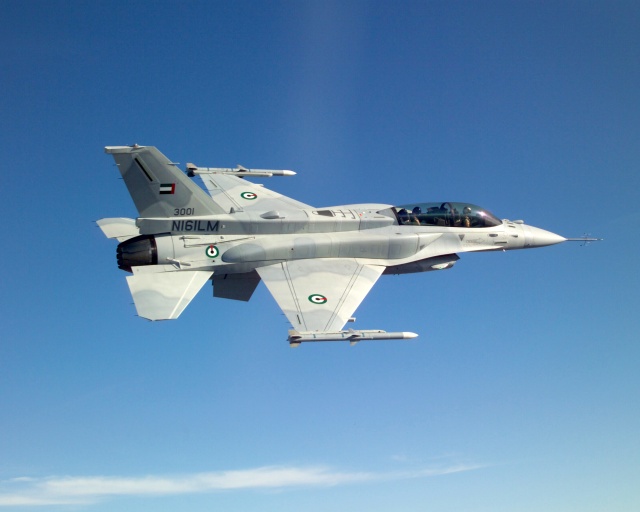
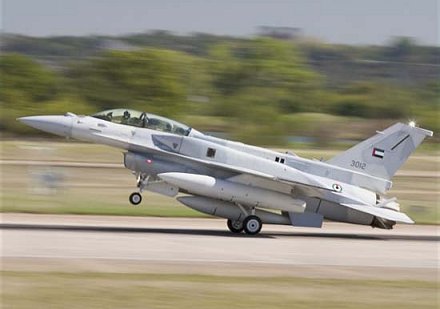 sf1?
sf1?F-16F (F-16B B15 mod)
no cft
no IrisT
no dorsal spine
no bulb rwr
deficiernt
-
EF-2000 twin-seat versión?


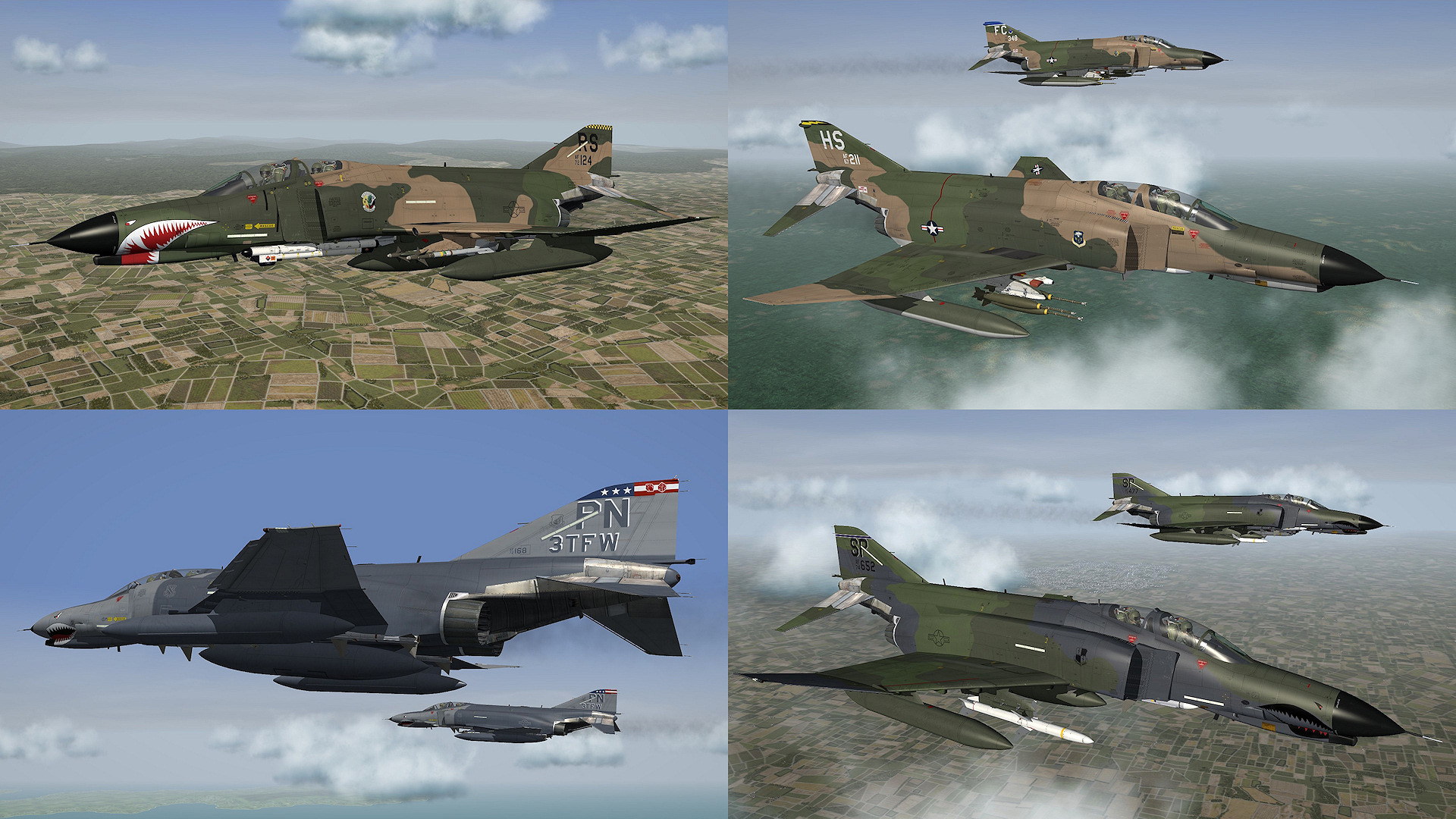


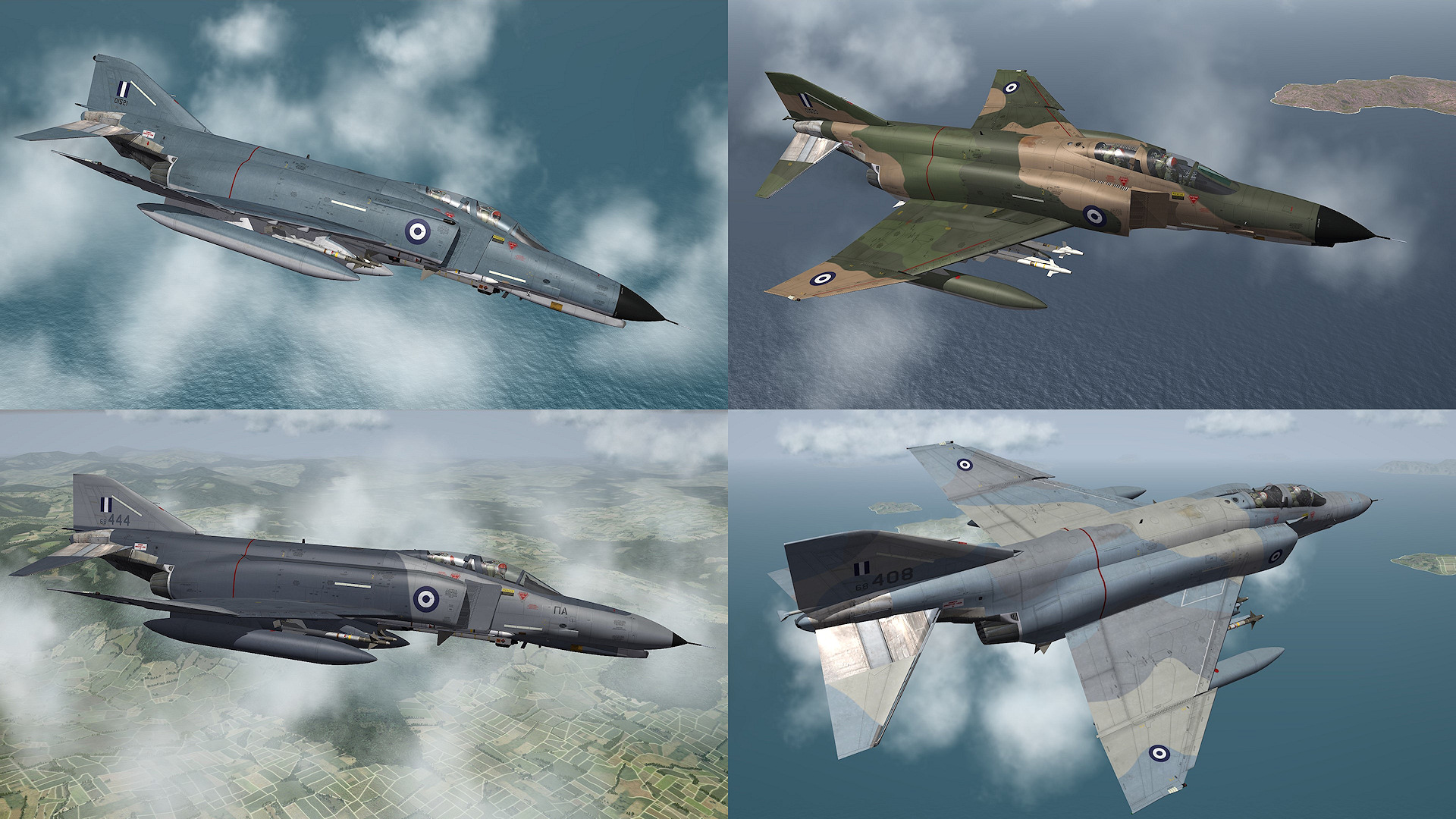

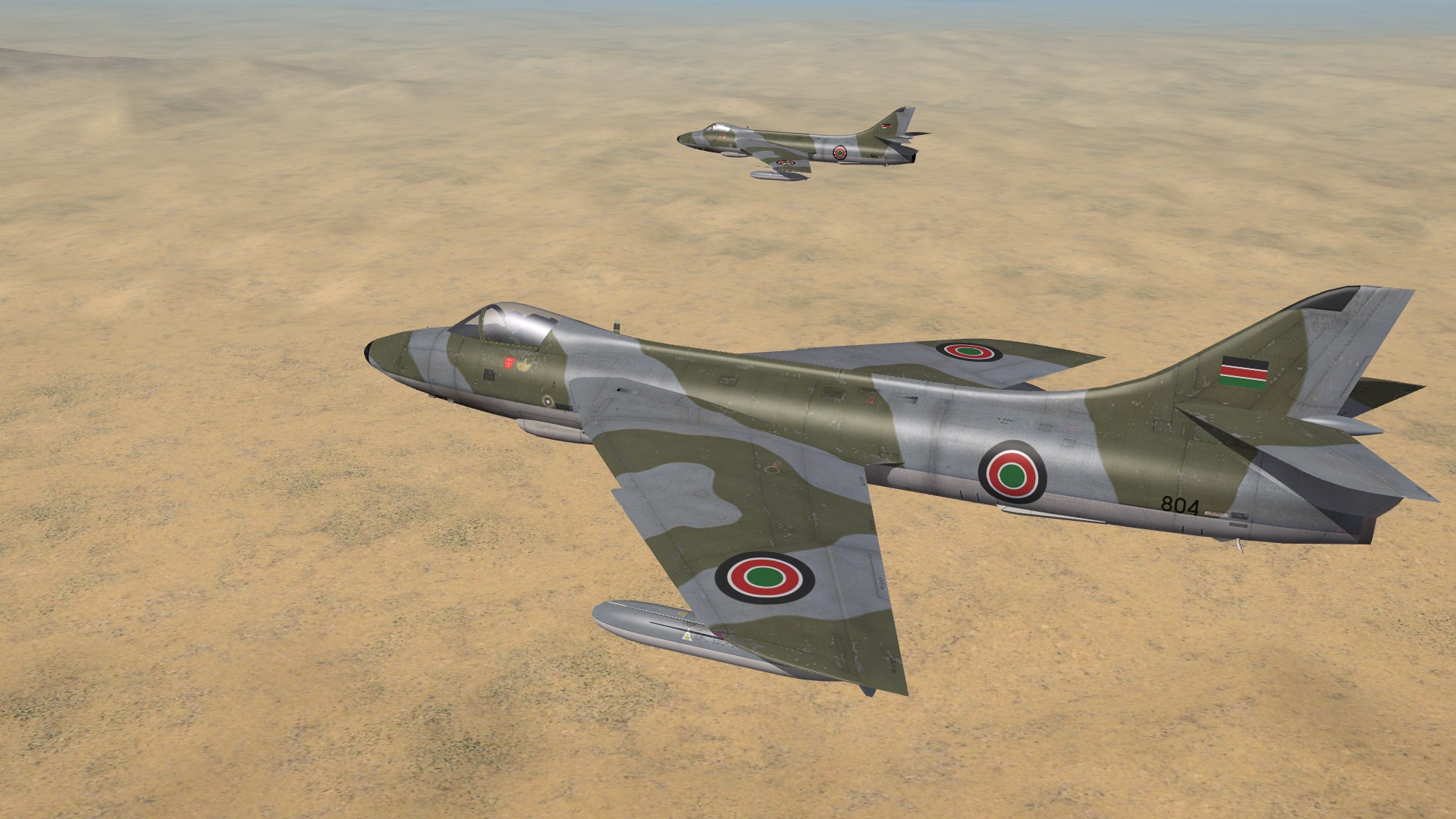
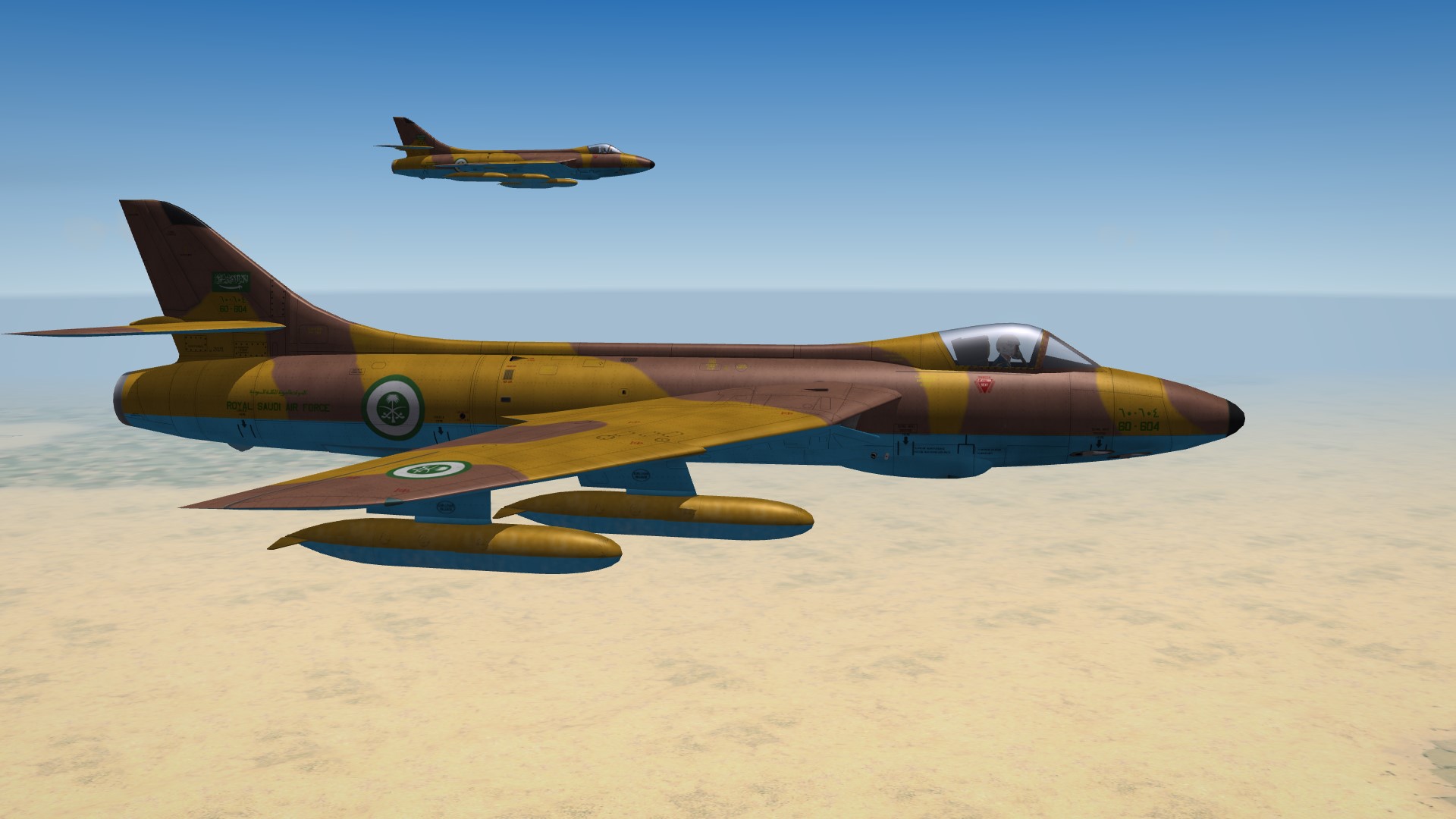
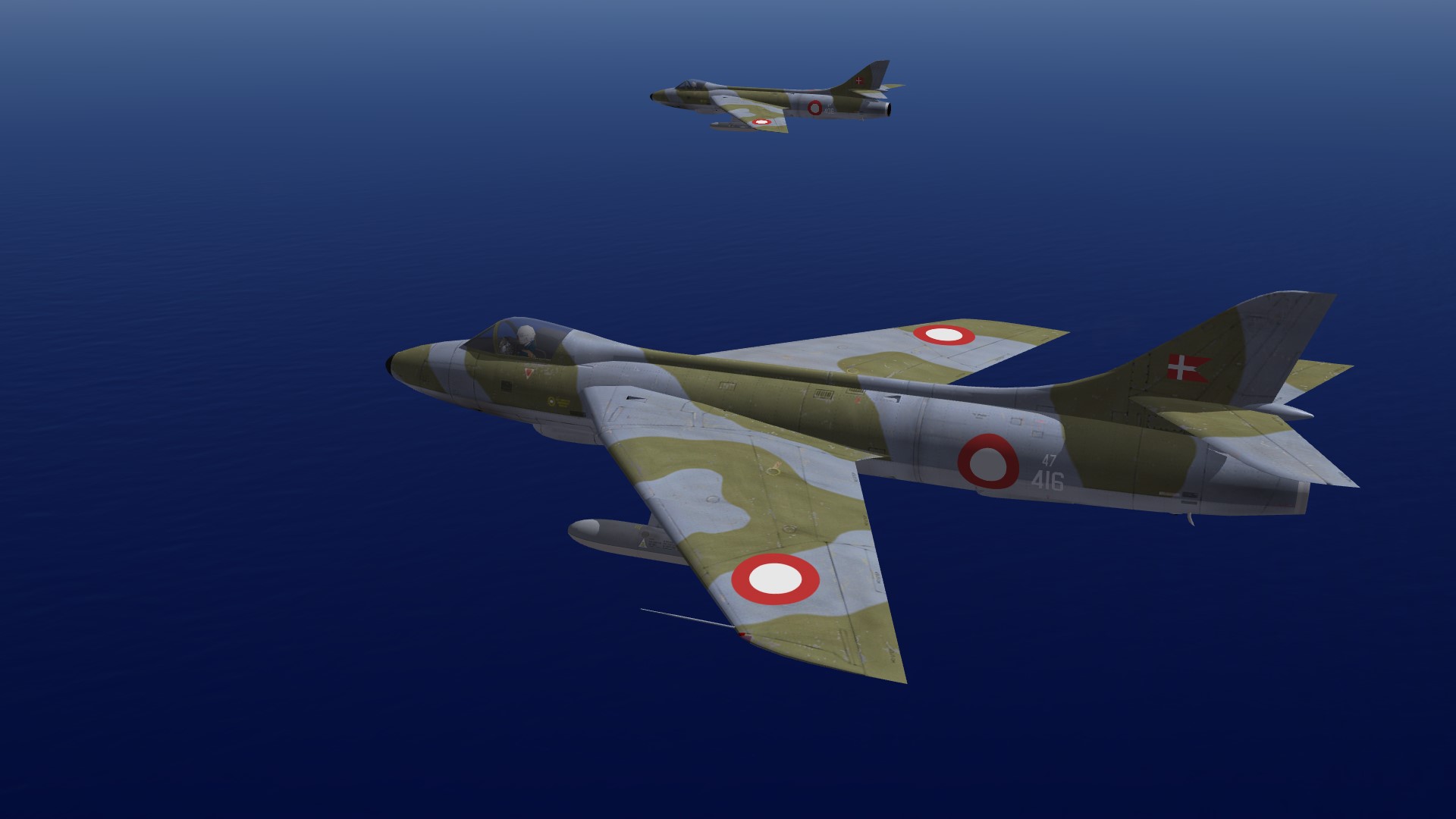

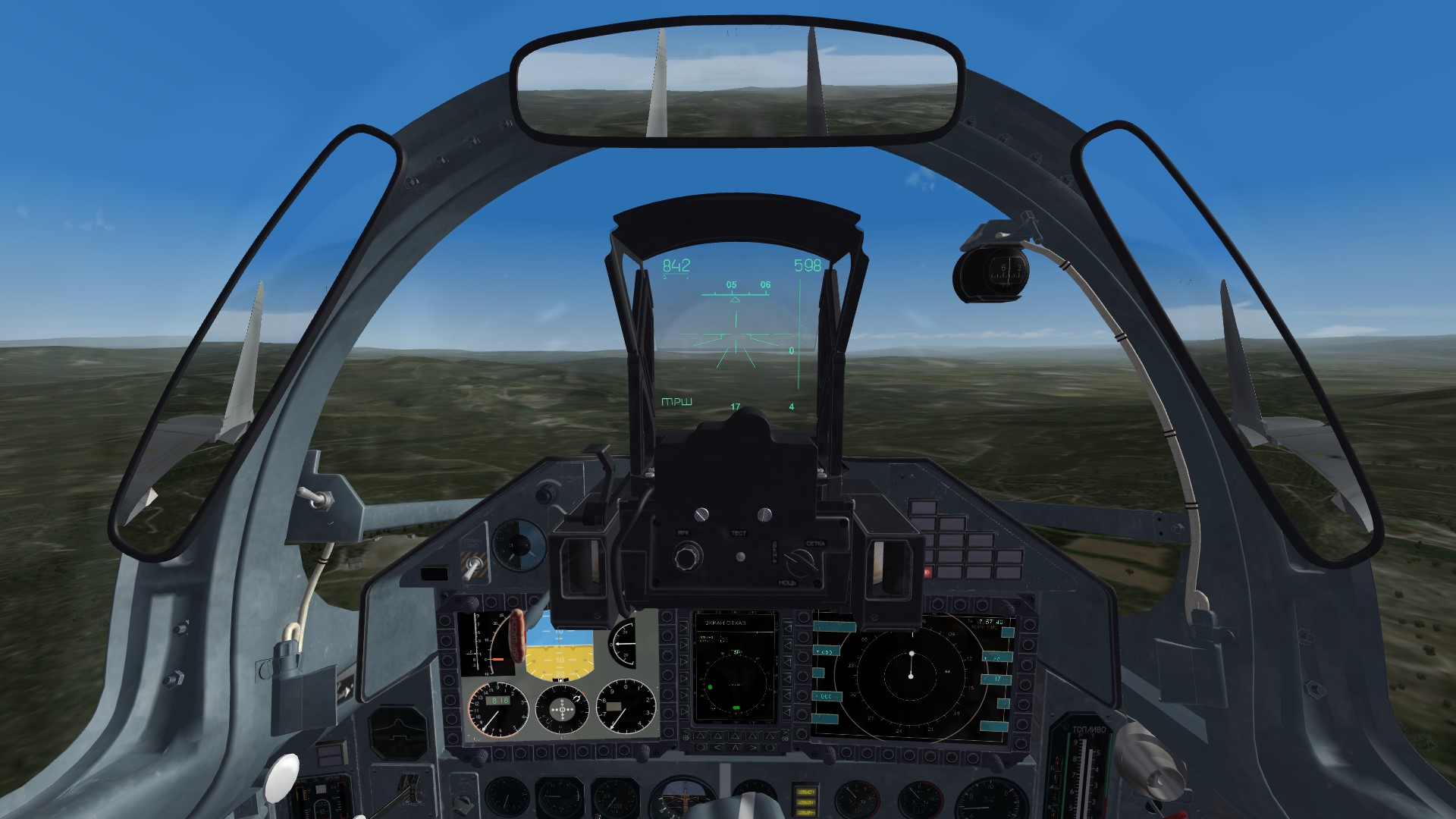
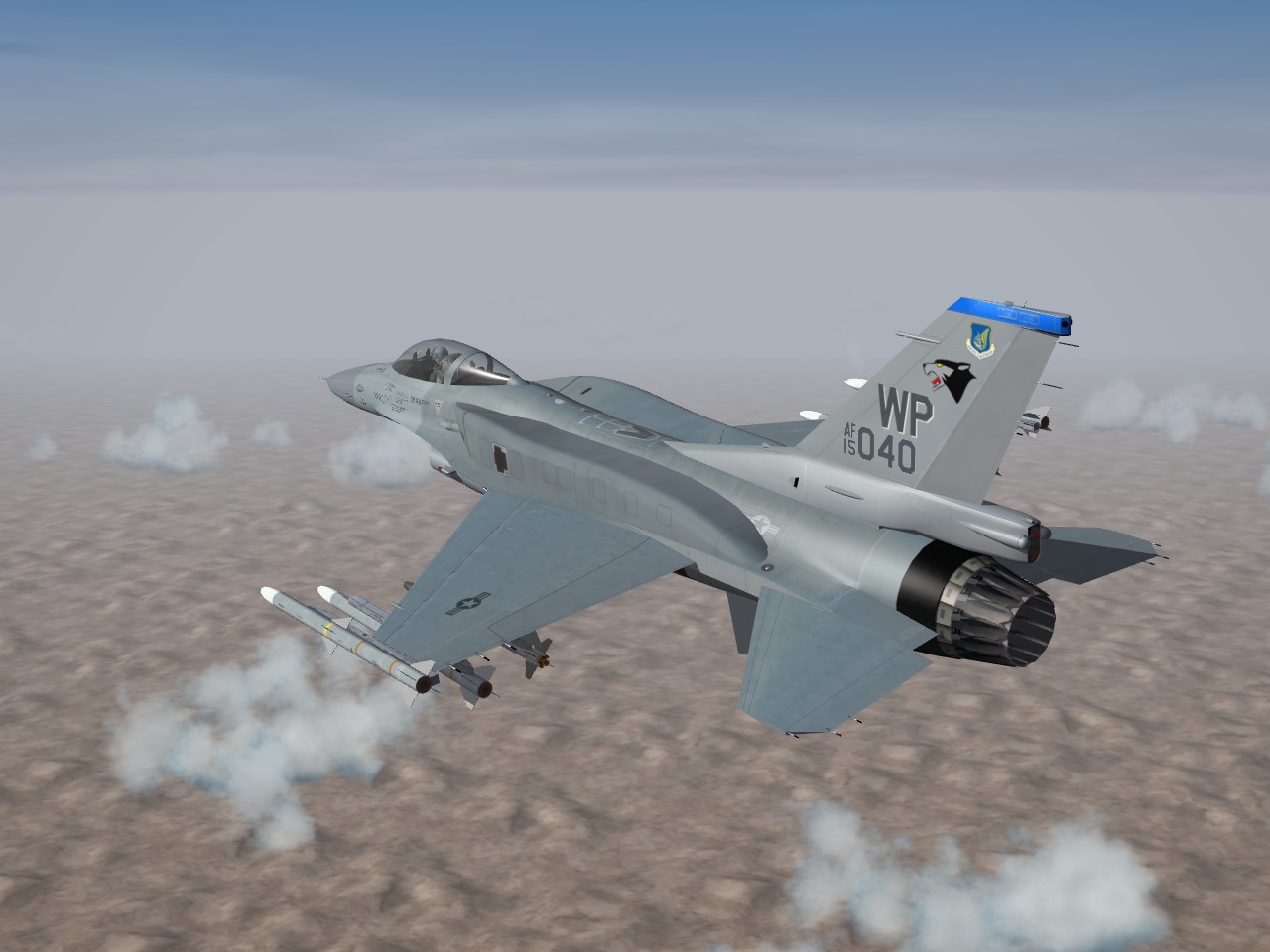

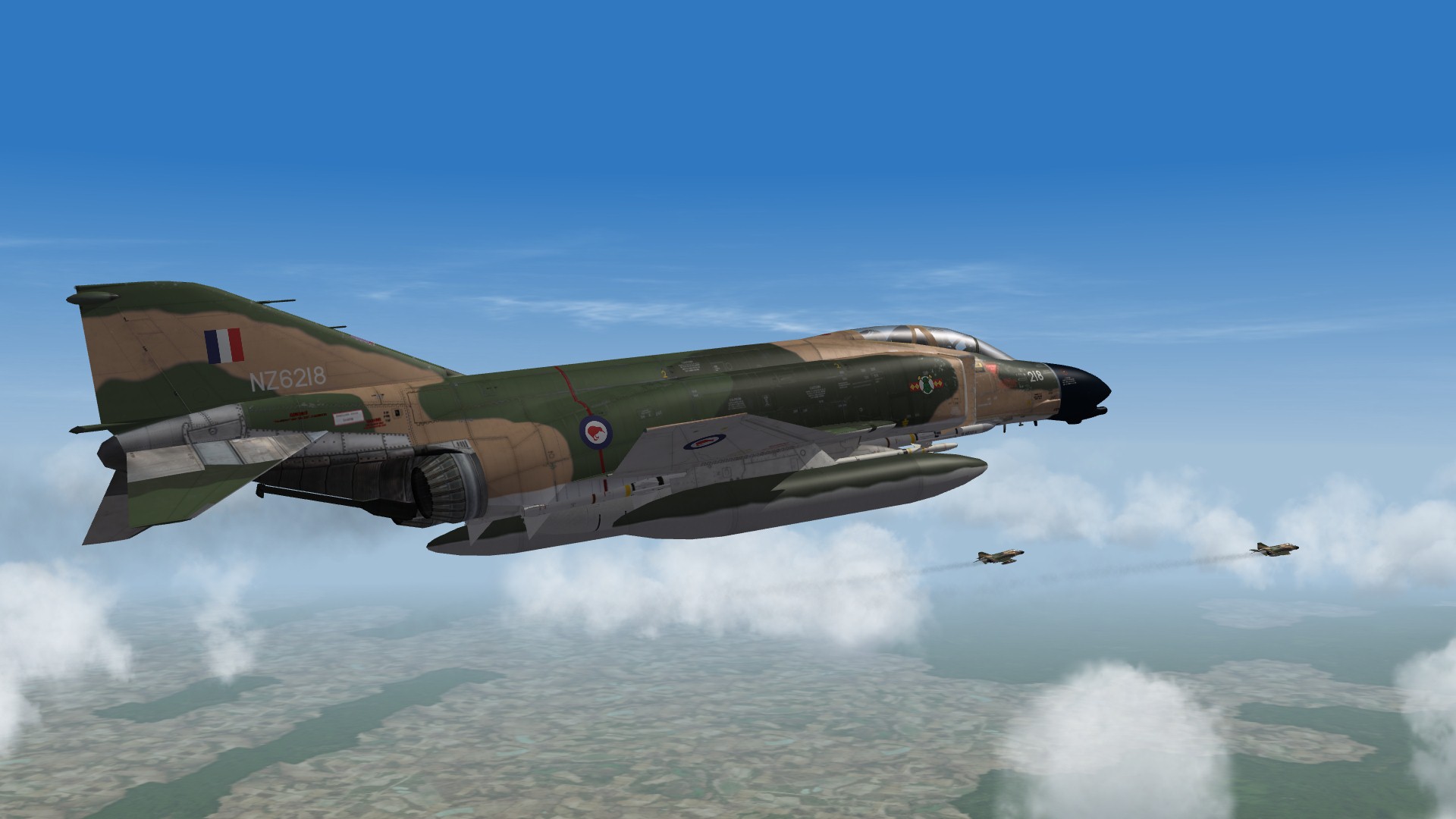



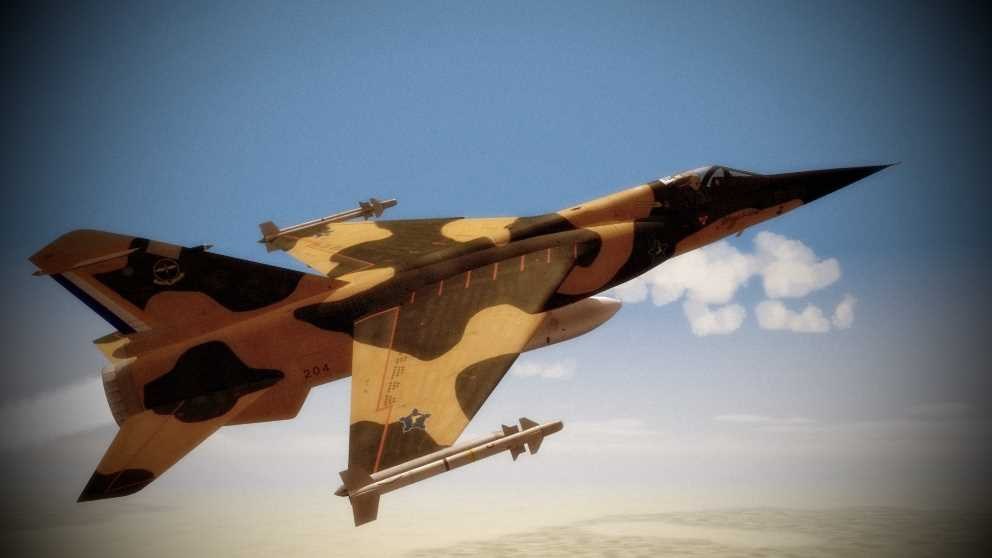
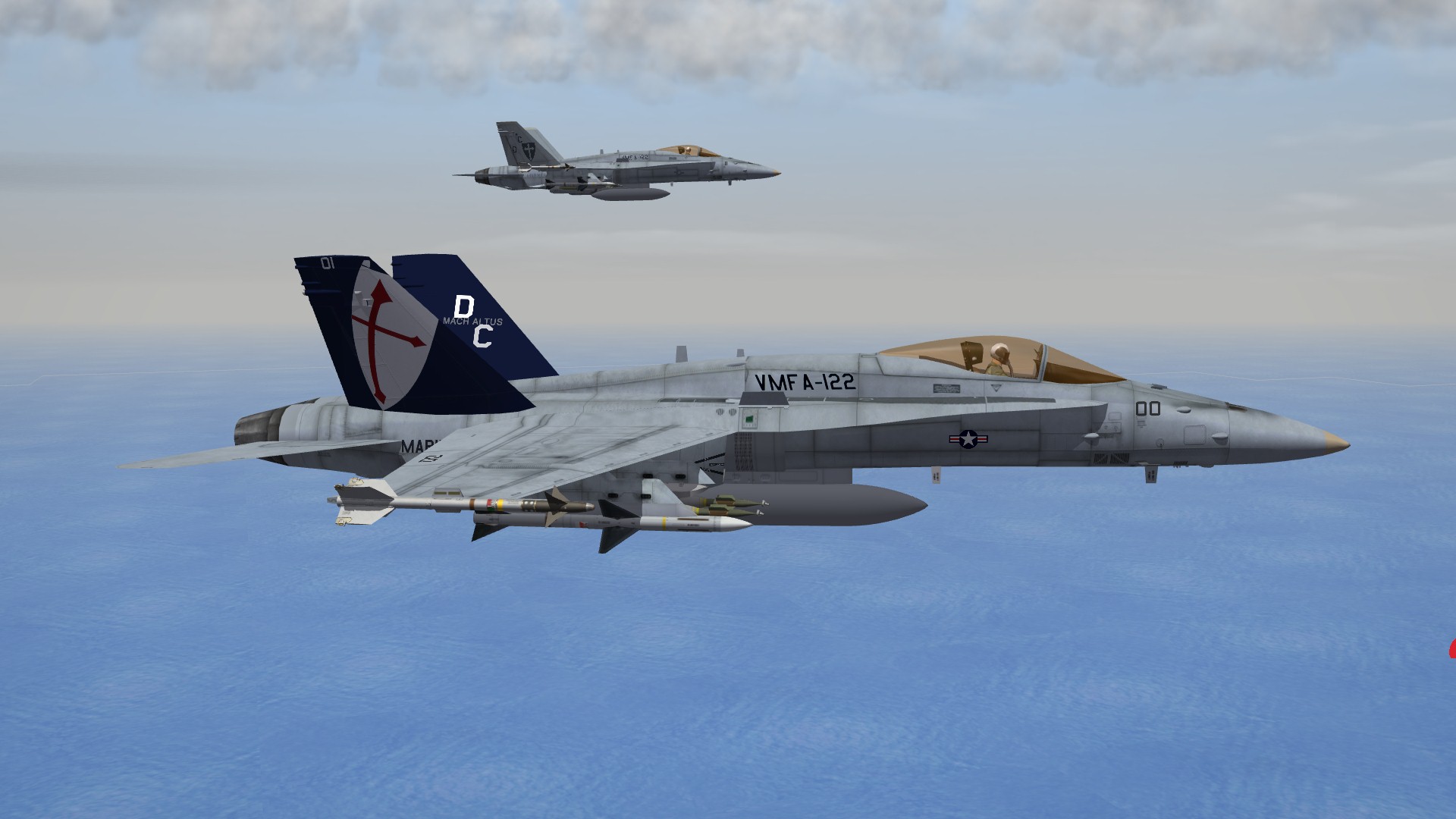

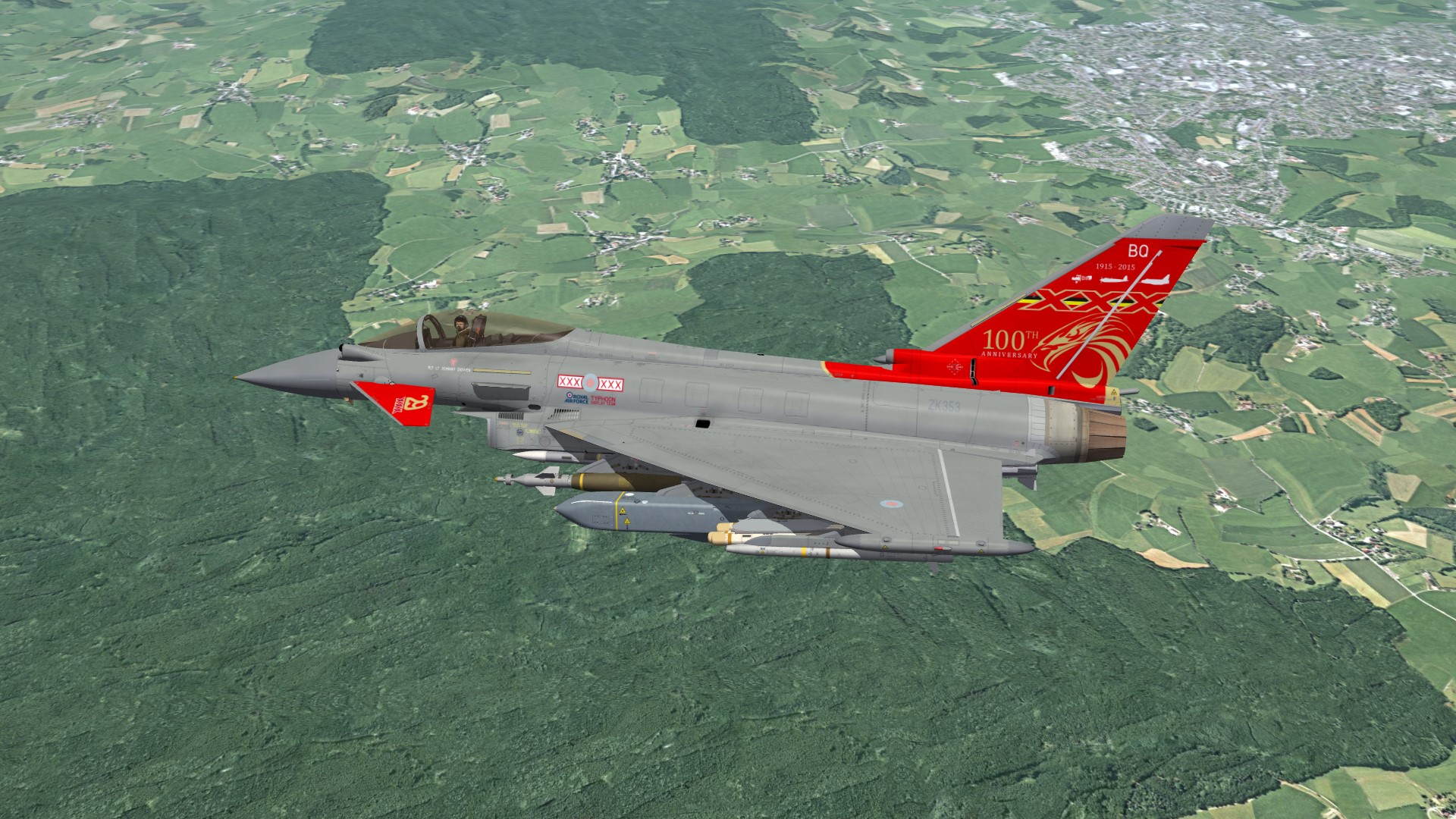
F-4E ROKAF pack
in F-4
Posted
ravenclaw_007! What's up! F4E kURNASS PACK!, F-4E iRANIAN PACK & F-4F Luftwaffe PACK!